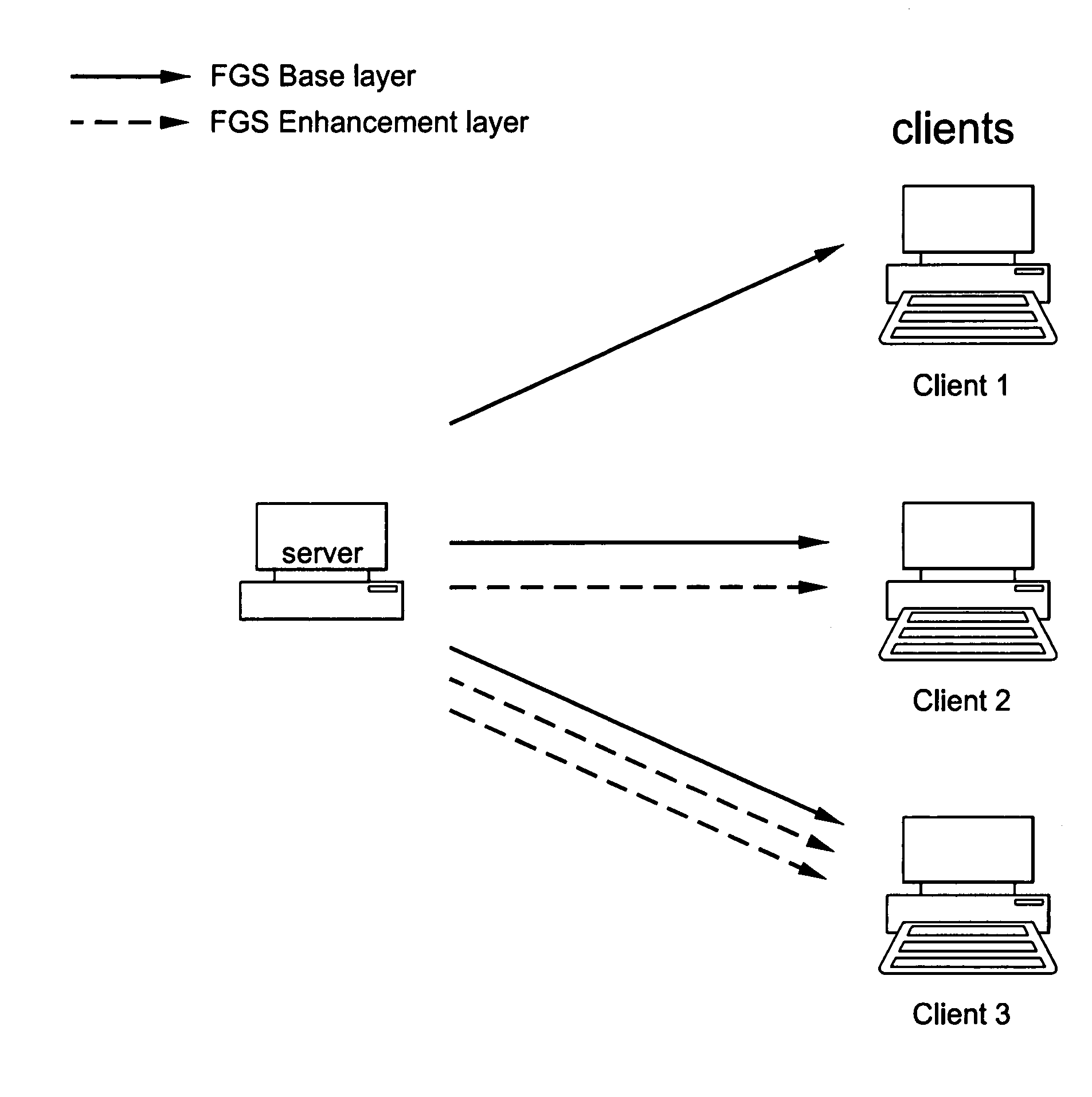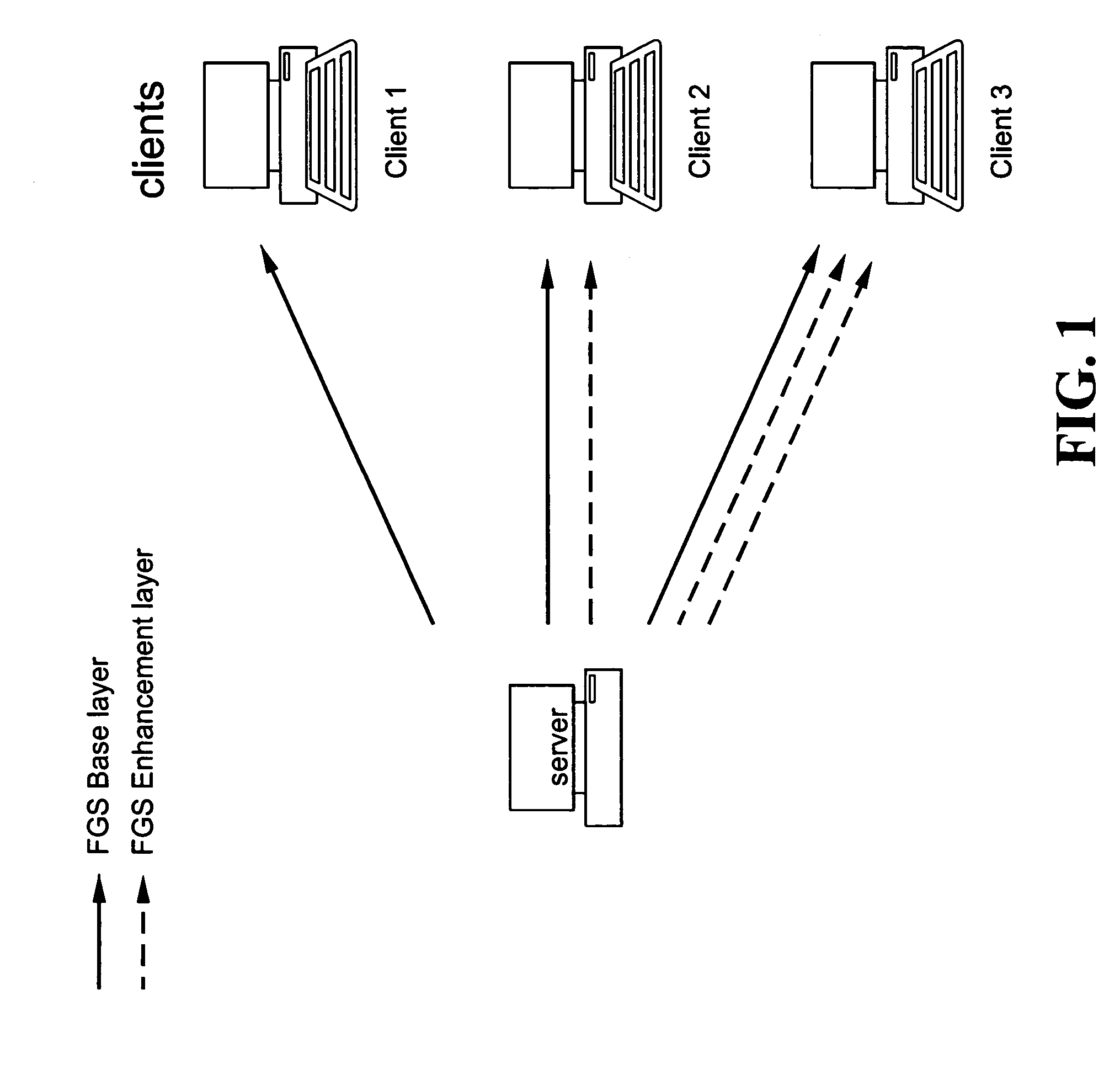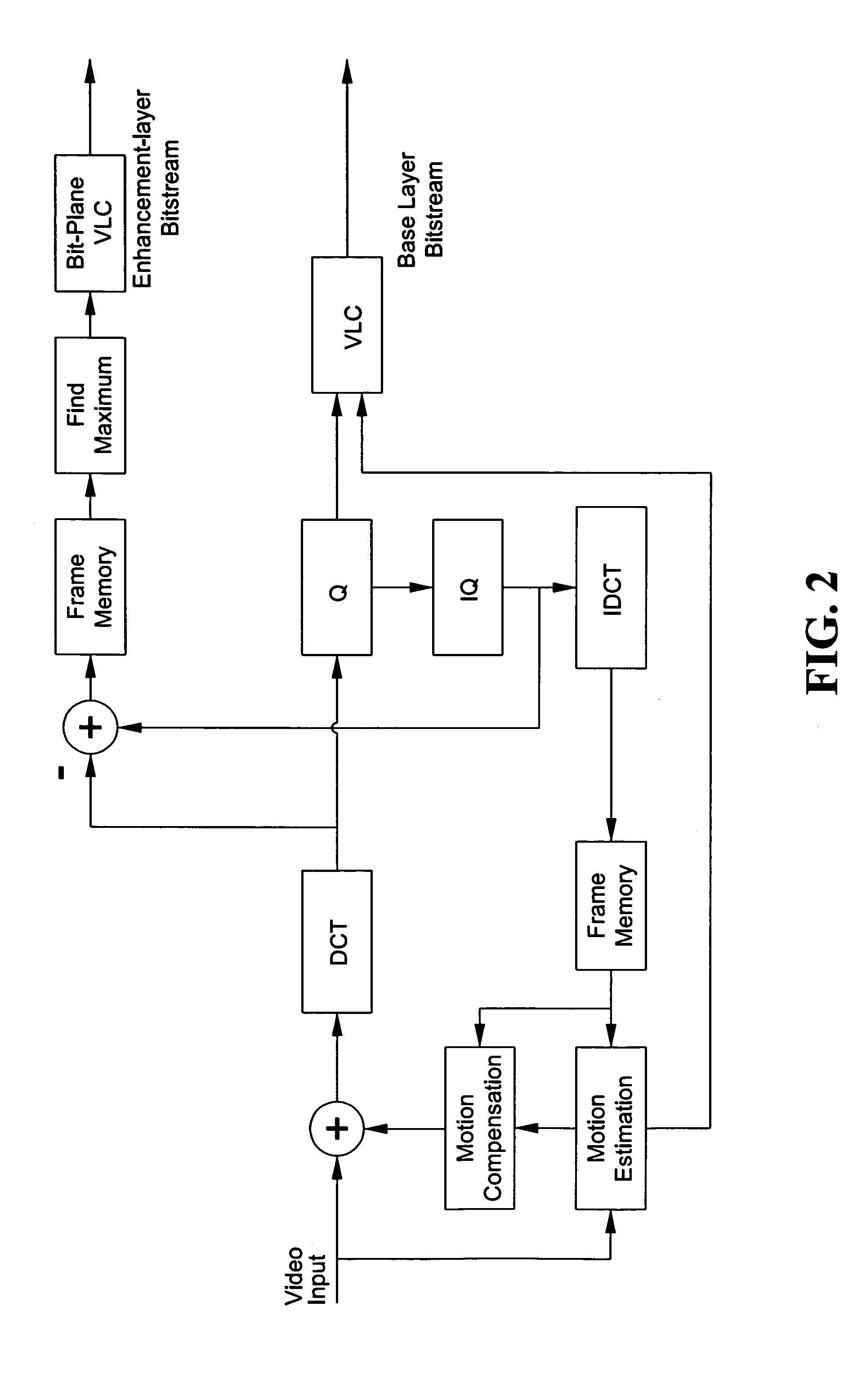Method and apparatus for MPEG-4 FGS performance enhancement
a scalable codec and fgs technology, applied in signal generators with optical-mechanical scanning, color televisions with bandwidth reduction, etc., can solve the problems of reducing the coding efficiency of fgs coders at the same bit-rate, reducing the coding efficiency of fgs coders, and reducing the bit-plane of enhancement layers. , to achieve the effect of enhancing the performance of fine granularity scalable codecs
- Summary
- Abstract
- Description
- Claims
- Application Information
AI Technical Summary
Benefits of technology
Problems solved by technology
Method used
Image
Examples
case 1
ailable Bandwidth
[0065]In this case, the available channel bandwidth estimated at the server is less than the amount of EL bits of I- and P-frames used for the fine predictions while encoding. Since the available bandwidth is not sufficient to send all the bits used in fine prediction, this invention truncates the enhancement layers as much as possible for I- and P-frames. The truncation scheme for each I / P frame is adapted according to the number of bits used for prediction in each frame as follows:
[0066]TBI&P,ELn=PBEL×PBI&P,ELn∑n=1NI&PPBI&P,ELn(9)
[0067]In this case, the bit-allocation for B-frames are all set to be zero, that is, TBB,ELm=0, m=1, 2, . . . , NB. Eq. (9) is used if the current bit budget is less then PBI&P,EL. The bit-allocation is made only for I- and P-frames, while the EL data of B-frames are all dropped in truncation in this case. This strategy can achieve more robust performance at low bit-rates.
case 2
Available Bandwidth
[0068]If the available bandwidth is sufficient for sending all the EL bits of I- and P-flames used for fine prediction, but is less than PBB,EL, the server starts to distribute the excessive bits to B-flames after the bit-allocations to I / P-frames can guarantee the bit-planes of I / P-flames used for fine-prediction be completely sent to the receiver.
case 3
vailable Bandwidth
[0069]If the available bandwidth is higher than that required for sending the number of EL bit-planes used for the fine prediction, the number of bits for distribution is controlled by the size of bit-planes and varies at particular bit-rates. However, when the bit-rate increases rapidly, there exists a large variation between two neighboring frames if no more bits are allocated to I / P-frames. Therefore, the distributed bit-allocations among frames should be balanced to avoid large quality variations.
[0070]The EL bit-allocation algorithm according to this invention is summarized with a pseudo program below:
[0071]
EL Bit-Allocation AlgorithmBegin:if (TBEL ≦ PI&P,EL) / * perform low-rate bit truncation * / TBI&P,ELn=PBEL×PBI&P,ELn∑n=1NI&PPBI&P,ELn,n=1,2,…,NI&P;TBB,ELm=0,m=1,2,…,NB;else if (TBEL ≦ PBEL) / * perform medium-rate bit truncation * / TBI&P,ELn=PBI&P,ELn,n=1,2,…,NI&P;TBB,ELm=PBB,EL×PBB,ELm∑m=0NBPBB,ELm,m=1,2,…,NB; else / * perform high-rate bit tr...
PUM
 Login to View More
Login to View More Abstract
Description
Claims
Application Information
 Login to View More
Login to View More - R&D
- Intellectual Property
- Life Sciences
- Materials
- Tech Scout
- Unparalleled Data Quality
- Higher Quality Content
- 60% Fewer Hallucinations
Browse by: Latest US Patents, China's latest patents, Technical Efficacy Thesaurus, Application Domain, Technology Topic, Popular Technical Reports.
© 2025 PatSnap. All rights reserved.Legal|Privacy policy|Modern Slavery Act Transparency Statement|Sitemap|About US| Contact US: help@patsnap.com



